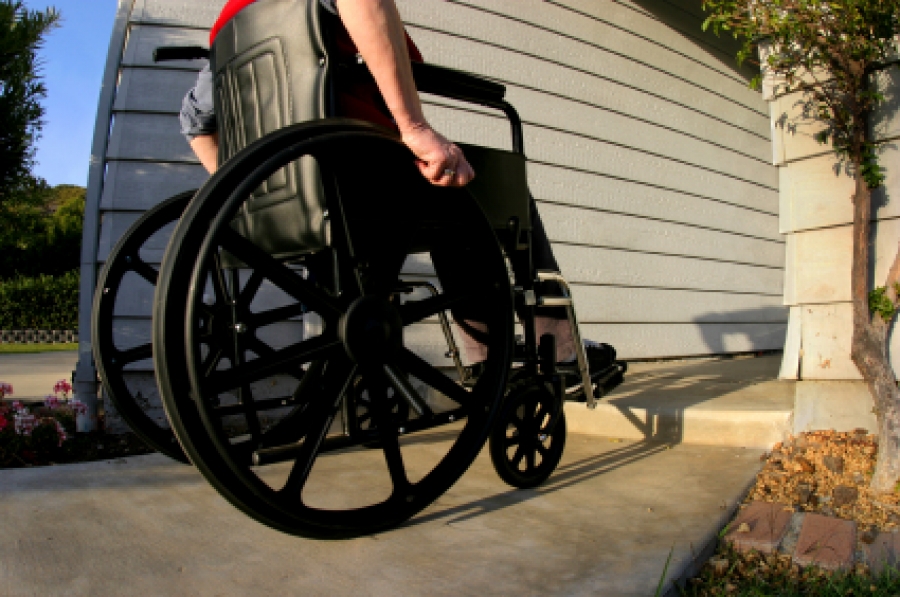Understanding Universal Design
The word “disability” isn’t mentioned much by designers and other professionals who employ the principles of universal design; at the heart of this design concept is a more positive message. Universal design refers to the idea that environments and products should be usable by everyone. Ronald L. Mace coined the term and founded The Center for Universal Design at North Carolina State University in 1989, using a grant from the U.S. Department of Education. Since that time the center has continued to research and develop design approaches that will make the built environment more accessible to everyone.

While universal design is an outgrowth of the disability rights movement that began in the 1960s, “it’s about far more than people who are in wheelchairs,” emphasizes Pat Manley, President of the Manley Architecture Group. “It addresses the needs of people across a range of abilities.” Manley is the architect for the Universal Design Living Laboratory, a national demonstration home in Columbus, Ohio.
A product or place that is designed according to universal principles is one that is intuitive; communicates using a range of sensory stimuli (sound, graphics, and tactile input); and is sized to be accessible with the least possible physical exertion. Examples of common products that have successfully employed universal design principles range from ergonomically correct kitchen tools to some personal computers.
“LEED is addressing the need for 'visitability.' This [universal design] will lead to changes in cities' infrastructure and housing, because the intention is that everyone should have access to amenities.” Pat Manley, President of the Manley Architecture Group
The first multi-family residence to have every unit feature universal design principles was 6 North in St. Louis, completed in 2005 and designed by Trivers Associates. 6 North continues to be a superior example of residential universal design; it was recently featured on the tour of the Universal Design Summit 4 (UDS4), held in St. Louis. Universal design features that were incorporated at 6 North include:
- Open floor plans
- Stepless entries
- Roll-in showers
- Adjustable countertops
- Appliances that are located about 18 inches above floor level
- Appliance controls and outlets that are reachable from a seated position, and
- High contrast color schemes (to promote visibility).
Additionally, almost half of the building’s 82 units are affordable units; the rest are market rate.
Since the intent of universal design is to create environments that are usable by the maximum number of people, the concept has a social justice component with an implicit reference to life stages. According to the UDS4 website, in addition to the 60 million people living in the United States with some type of disability, the number of older adults will double by 2030. Various state departments that administer policies for the aged are already turning attention to "aging in place" and, by extension, to universal design.
Even a building market that has been heavily focused upon green building and concerns for the natural environment has room for Incorporating universal design features. “LEED is addressing the need for ‘visitability.' This [universal design] will lead to changes in cities’ infrastructure and housing, because the intention is that everyone should have access to amenities,” explains Manley. Visitability is a movement that focuses on three basic design elements that allow for greater mobility of the disabled population: wide doorways, main floor half-baths, and zero-step entries. LEED for Neighborhood Development awards a point for Visitability and Universal Design. “Changes on this macro scale will pull into the core and lead to the development of universal design,” concludes Manley.
The ultimate goal for any building that incorporates universal design principles is that it appeals to the general population as much as it is usable and accessible. Only environments that are truly inviting to everyone will achieve inclusiveness, as opposed to promoting continued separation and segregation.

Kristin Dispenza
Kristin graduated from The Ohio State University in 1988 with a B.S. in architecture and a minor in English literature. Afterward, she moved to Seattle, Washington, and began to work as a freelance design journalist, having regular assignments with Seattle’s Daily Journal of Commerce.
After returning to Ohio in 1995, her freelance activities expanded to include writing for trade publications and websites, as well as other forms of electronic media. In 2011, Kristin became the managing editor for Buildipedia.com.
Kristin has been a features writer for Buildipedia.com since January 2010. Some of her articles include:

